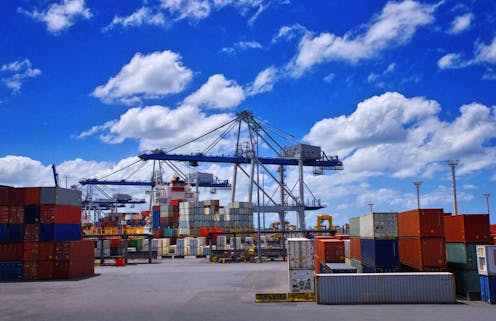New modelling shows how Trump’s trade tariffs will hurt – and help – New Zealand
- Written by Niven Winchester, Professor of Economics, Auckland University of Technology

Few can doubt Donald Trump’s trade intentions[1] once he takes office next January. In a recent social media post, the US president-elect promised:
On January 20th, as one of my many first Executive Orders, I will sign all necessary documents to charge Mexico and Canada a 25% Tariff on ALL products coming into the United States.
In a separate post he announced there would be an additional 10% tariff on imports from China. While New Zealand goods are exempt (at this stage), we can expect indirect impacts from a variety of directions.
Because the tariffs will raise the price in the US of goods from targeted countries, New Zealand producers have an opportunity to increase their share of the US market.
Also, facing reduced US demand for their products, producers in targeted countries will increase their supply to New Zealand (and other countries). Both effects will benefit New Zealand.
However, there are downsides, too. The tariffs will decrease GDP in the targeted countries. In turn, this will reduce the amount of money those countries have to spend on New Zealand goods.
And because many imports from targeted countries are used in US supply chains, the price of US goods (including those shipped to New Zealand) will increase.
Simulating the global economy
To evaluate the impacts of the tariffs, I use a global model of production and trade that captures interactions between sectors and countries, and consumer demand. (The model is similar to that used by the Productivity Commission’s inquiry into improving economic resilience[2].)
The modelling finds tariffs will have minimal aggregate effects on New Zealand, but will significantly affect bilateral trade for some goods.
It’s estimated the tariffs will decrease national income in Canada and Mexico by 4.7% and 7.1% respectively, and income in China by 0.8%.
The impacts of the tariffs are largest in Canada and Mexico because, relative to China, these nations face higher tariffs, and the US accounts for a larger share (more than 75%) of each country’s exports.
The model projects the tariffs will have little impact on New Zealand’s national income, with gains in some areas offset by losses in others.
More exports to the US, less to China
There are, however, substantial changes in bilateral trade flows. New Zealand’s yearly merchandise exports to the US are projected to rise by NZ$1.2 billion, as US consumers replace goods from targeted countries with goods produced elsewhere.
About half of that increase in New Zealand exports to the US are agricultural and food products (mainly meat products). The other half are manufactured goods, such as machinery and equipment.
Reduced incomes in targeted economies will reduce New Zealand exports to these countries by a projected $965 million. Dairy products will bear the brunt of this decline.
Most of the decrease in exports is driven by reduced demand in China. This is because China constitutes approximately 25% of New Zealand’s export market, whereas Canada and Mexico collectively account for less than 2%.
New Zealand exports to other countries decrease by $308 million. As targeted countries redirect exports from the US to other markets, New Zealand’s market share reduces as a consequence.
Overall, driven by decreasing exports to China, the value of New Zealand’s total agricultural and food exports falls by $648 million. Conversely, aggregate manufactured exports increase by $280 million.
Reduced imports from the US, more from elsewhere
There are also significant changes in New Zealand imports. As the tariffs increase the price of US goods, New Zealand imports from the US will decline by $353 million.
In contrast, imports from targeted countries increase by $870 million as producers pivot towards non-US markets.
New Zealand imports from other countries decrease by $777 million as these nations direct more exports to the US. Total New Zealand imports decrease by $259 million.
These trade changes may have substantial effects on individual companies and specific communities. But at the economy-wide level, gains in some areas (increased exports to the US and cheaper imports from targeted counties) are offset by losses elsewhere (decreased exports to China and more expensive US imports).
The net result is that the proposed US tariffs will have little aggregate effect on New Zealand.
Bigger challenges
There are at least two changes to the global trading environment that are of greater concern to New Zealand than the recently announced tariffs.
First, if China imposed retaliatory tariffs, as it did when the previous Trump administration imposed tariffs on Chinese goods, it would shrink global GDP and ultimately dampen demand for New Zealand exports.
Second, in the lead-up to the 2024 US election, Trump proposed tariffs of up to 20%[3] on imports from all countries. My model estimates such tariffs would reduce New Zealand exports to the US by two-thirds, and reduce New Zealand GDP and national income by nearly 1%.
Should that happen, there would be challenging trade winds ahead.
References
- ^ trade intentions (edition.cnn.com)
- ^ improving economic resilience (www.treasury.govt.nz)
- ^ proposed tariffs of up to 20% (www.odt.co.nz)
Authors: Niven Winchester, Professor of Economics, Auckland University of Technology







